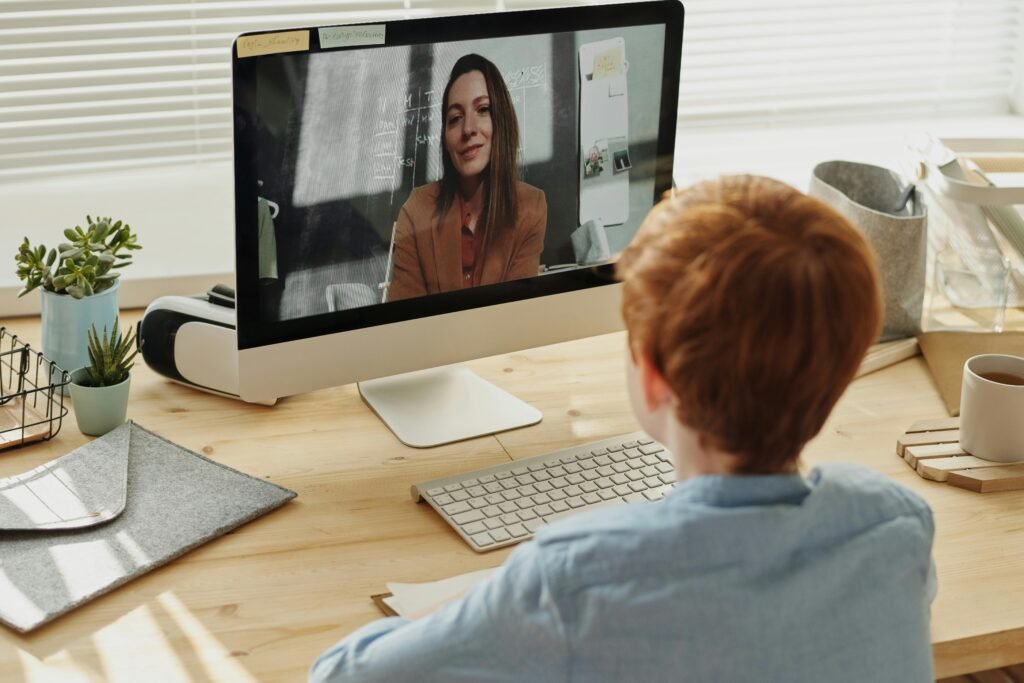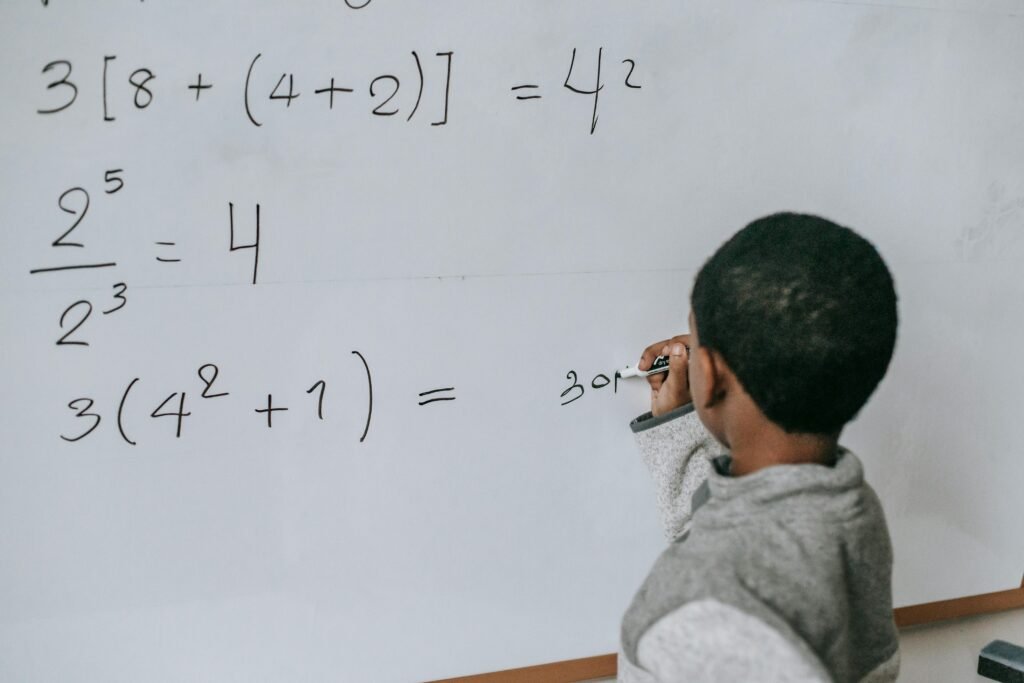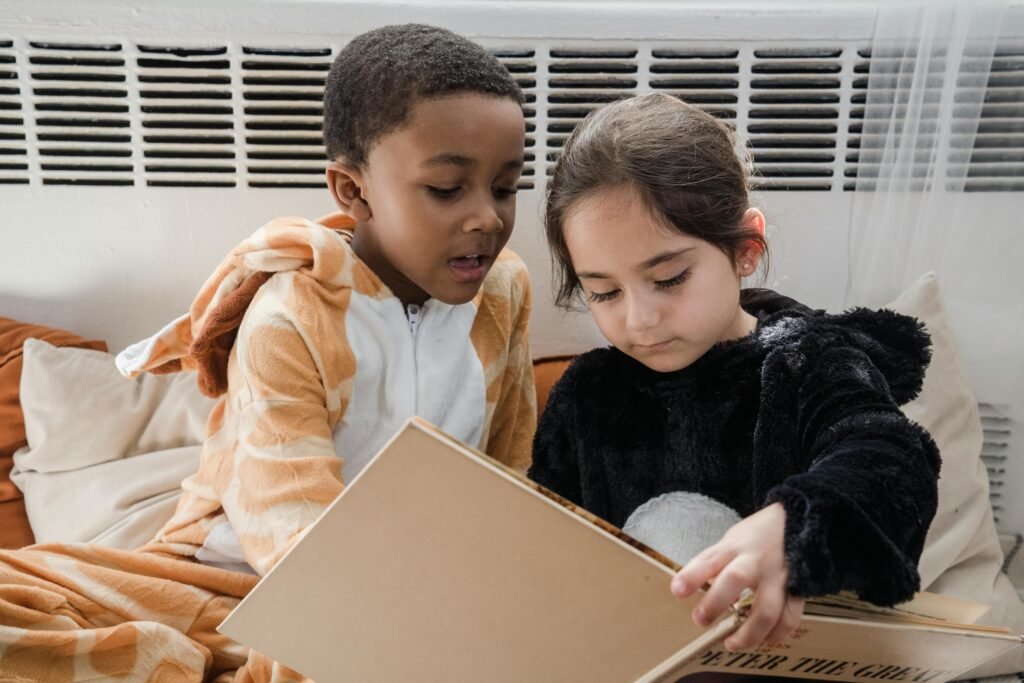Every parent wants their child to do well in school. But the way kids learn today is changing fast. Books are still important, but screens are now a big part of the picture. One of the biggest learning platforms? YouTube.
86% of teens say they use YouTube to learn new things or study
Most teenagers already use YouTube to learn. In fact, 86% say they go there to study or figure things out. That’s almost 9 out of 10 teens. This tells us something powerful—kids want to learn. They’re curious. But they’re also choosing where and how they learn.
YouTube is full of short, easy-to-watch videos that explain everything from algebra to astronomy. Teens are watching these not because they’re forced to, but because they find it helpful. That makes a big difference.
When a child chooses to learn something, they remember it better. They’re more focused. They’re more likely to ask questions and dig deeper.
So how can parents support this?
The first step is to encourage it. If your child says they’re watching a video to study, ask them about it. Sit with them for a few minutes. Show interest. This tells them that you value their way of learning. It builds trust.
You can also help them find good-quality learning channels. Not every video is great. Some are slow or confusing. Some even get things wrong. Help your child pick channels that are clear, fun, and accurate. Look at the comments.
See how many people recommend the video. You can even ask your child to teach you what they just learned. That helps them remember it even more.
Also, try to set limits around non-educational YouTube time. Not all screen time is equal. Learning on YouTube is very different from endless scrolling or watching prank videos. A good rule is: if they’ve spent time learning something new, reward that by giving them a short break.
Teens using YouTube to study isn’t a trend. It’s the new normal. When used right, it can be just as powerful as a classroom lesson—sometimes even more.
Students retain 95% of a message when watching it in video format compared to 10% when reading it
This is one of the most important stats you’ll read today. When kids read something, they remember only about 10% of it. But when they watch that same information in a video, they remember 95%. That’s a huge difference.
Why does video work so well?
Because it mixes pictures, sound, and storytelling. The brain loves that. It makes learning feel real. Imagine trying to learn how a volcano erupts from a textbook. Now imagine watching a slow-motion video of it happening, with clear explanations, sound effects, and arrows pointing to the parts of the volcano. Which one sticks better?
Video makes learning active. The brain sees and hears at the same time. This double input makes it easier to store in memory. It also keeps attention for longer. That’s a big win, especially for kids who struggle to sit and read for long.
So, how do you use this at home?
Start by using videos as your “first step” when introducing a new topic. Before opening the book, find a good video that shows the concept. This gives your child a strong picture in their mind. Then, when they read or write about it later, they already understand the basics.
You can also use video for review. Before a test, have your child re-watch videos about key topics. Let them pause and rewind parts they don’t understand. It’s like having a teacher on demand.
Another tip is to let your child explain the video back to you in their own words. This shows you if they truly got it. It also helps them lock that knowledge in.
Remember, reading is still important. But if your goal is deep understanding and long-term memory, video can make that journey easier, faster, and way more fun.
Educational YouTube videos lead to a 12% average increase in test scores
Here’s where things get really exciting. Watching educational videos isn’t just about feeling smart—it actually works. Studies show that students who use YouTube to learn score about 12% higher on tests. That’s a full grade level in some cases.
Think about what that means. If your child usually scores 75%, using videos the right way could bump that up to around 85%. That’s a big deal. It could mean the difference between passing and failing. Or between getting into a great school and not.
So what makes YouTube so effective?
It’s flexible. Kids can watch at their own pace. They can pause, rewind, and replay until it clicks. In a classroom, if a child doesn’t understand something, they might be too shy to ask. On YouTube, they can watch the same part five times if they need to—no pressure, no judgment.
It’s also visual and clear. Many YouTube teachers use drawings, real-life examples, and even animation to explain things that are hard to imagine. That makes even the toughest subjects easier to grasp.
Now here’s how to boost your child’s scores with YouTube.
Create a simple study plan with video time built in. For example, 20 minutes of math videos before dinner. Or one science topic per day with a follow-up quiz. Keep it short but focused.
Make sure the videos match what your child is learning in school. You can check their textbooks or ask their teacher for topics. Then search for those topics on YouTube and save the best videos in a playlist.
Track results. After using YouTube for a few weeks, compare your child’s test results with their past ones. Ask how they feel about their progress. Often, the confidence boost alone is worth it.
You don’t need to replace school. Just add to it in a smart, simple way. That’s how you turn screen time into score time.
70% of teachers report that students perform better when video is included in lessons
Teachers know what works—and they’re saying loud and clear that video helps. In fact, 70% of teachers report that students do better when video is part of the lesson. That’s more than just a trend. It’s a shift in how education is done.
Video doesn’t replace the teacher. It supports them. It gives students a second way to understand things. Sometimes a teacher explains something one way, and it doesn’t click. But then a video shows it from a different angle, and suddenly it makes sense.
Also, videos can bring the world into the classroom. Want to teach about the rainforest? Show a real video of animals and trees. Learning about ancient Egypt? Watch a video tour of the pyramids. These things stick in a child’s mind much more than just reading about them.
Many teachers use YouTube to assign homework, introduce new topics, or help students review before tests. And students enjoy it. Learning feels more like discovery than hard work.
As a parent, you can use this too.
If your child’s teacher shares a video, watch it with them. Ask what they learned. Let them explain it in their own words. That simple step boosts memory and shows that you care.
If your school doesn’t use video yet, you can add it at home. Find videos that match what your child is struggling with. Watch together. Pause and ask questions. Turn it into a game—“Can you teach this back to me?”
You can also use video to prepare for live classes. Watch a short explainer on the topic before class starts. Your child will walk in with confidence and will be more ready to participate.
When teachers and parents both support learning through video, kids win. It’s that simple.
68% of students say YouTube helps them understand difficult concepts
Every student struggles with something. It could be fractions, photosynthesis, or grammar rules. But here’s the good news—68% of students say YouTube helps them understand those tricky topics better.
Why? Because YouTube makes hard things feel easier. Imagine trying to learn about how the heart works from a flat drawing in a book. Now imagine watching a video that shows the heart beating in 3D, with arrows showing where the blood goes and a clear voice explaining each part. The second one feels like someone is holding your hand and guiding you through.
YouTube videos are often made by people who love the topic they’re teaching. They use real-life examples, fun animations, and simple words. That’s why kids often say, “Now I get it!” after watching.
So what can you do as a parent?
Start by asking your child what they find hard at school. Then search for a video on that topic together. Watch a few seconds of each one until you find one that’s clear and engaging. Don’t settle for the first one—some videos are better than others.
Encourage your child to pause and take notes while watching. Writing things down helps with memory. If something is still confusing, rewatch it or find a different video that explains it in another way. That flexibility is what makes YouTube so powerful for learning.
You can even create a playlist of “tough topics” that your child can come back to anytime. It becomes their personal library of help.
When a child overcomes a hard topic using a video, they gain more than just knowledge. They gain confidence. And that’s something no textbook can teach.
Students who spend 2–3 hours a week watching educational content on YouTube score 9% higher on average
Time matters. But it’s not about spending more time—it’s about spending the right amount of time. Research shows that kids who spend just 2 to 3 hours a week watching educational content on YouTube score around 9% higher than those who don’t.
That’s not a huge time commitment. It breaks down to about 20 to 30 minutes a day. Just one or two short videos can make a big difference.
But here’s the key—it has to be focused time. Not background noise. Not random scrolling. Just pure, intentional learning.
So how do you help your child get the most out of those 2–3 hours?
Create a simple weekly video routine. For example, Monday could be math videos. Tuesday could be science. Keep each session short and sweet. You can set a timer if that helps.
Ask your child what they’re learning in school and match the videos to those topics. That makes the learning stick better. If they’re studying angles in class, find videos about angles. If they’re reading about the water cycle, look for a video that brings it to life.
Make it part of the daily rhythm—just like brushing teeth or packing a school bag. It becomes a habit. A powerful one.
You don’t need hours and hours of video learning. Just a few smart minutes a day, done right, can add up to real academic growth.
Over 500 million learning-related videos are watched on YouTube every day
This number is massive. Every day, over 500 million educational videos are being watched. That’s half a billion. It shows how many people—kids and adults—are turning to YouTube to learn something new.
What does this tell us?
First, that learning is no longer limited to the classroom. It’s happening everywhere—on phones, tablets, even smart TVs. Kids are learning about the solar system while eating breakfast. They’re watching math tricks in the car. Learning is always on.
Second, it means there’s a huge variety of content. No matter what your child is curious about, there’s probably a video for it. From coding to chemistry, history to handwriting—YouTube has it all.
But with so many videos, it’s important to guide your child toward the good ones.
Teach them how to choose wisely. Look for videos with high ratings, lots of views, and clear titles. Watch the first few minutes to check if the speaker is easy to understand. If your child doesn’t like one video, try another. That’s the beauty of choice.
You can also subscribe to trusted educational channels. That way, your child gets a steady stream of high-quality content right on their homepage.
Remember, quantity isn’t the goal. Quality is. A single good video can teach more than ten bad ones. Help your child find the gold among the noise—and then watch their learning take off.
60% of K-12 teachers use YouTube as part of their teaching resources
Teachers aren’t just okay with YouTube—they’re using it themselves. About 60% of K-12 teachers now include YouTube in their lessons. That’s more than half of all teachers across grades.
This tells us that video is not just a home tool—it’s a classroom tool too. Teachers are using YouTube to show experiments, explain tough ideas, and even bring guest speakers into the room (virtually).
Why are teachers choosing YouTube?
Because it’s effective. It saves time. It keeps students engaged. Instead of spending 15 minutes drawing something on the board, a teacher can show a 2-minute animation that does a better job.
As a parent, you can build on this.
Ask your child if their teacher uses videos. If yes, see if those videos are posted online. Watch them together at home. Use them for revision. If not, ask the teacher if they can recommend any good channels for extra learning.
You can also encourage your child to share videos they’ve found with their teacher. Some teachers are open to using student-suggested content. It makes learning feel more like a team effort.
When home and school use the same tools, kids feel more supported. And that support shows up in better results and happier learning.
77% of students aged 13–18 use YouTube weekly for school-related learning
Teens aren’t just on YouTube for fun—they’re on there to learn. About 77% of students between ages 13 and 18 say they use YouTube every single week for school. That’s nearly 8 out of 10.
This shows that learning on YouTube is now a regular part of life. It’s not just for last-minute cramming before a test. It’s part of the weekly rhythm. And teens are driving this change themselves.
They’re choosing videos to help with homework. They’re watching explainer videos before class. They’re learning how to write essays, solve equations, and understand history.
So what’s the takeaway?
Support your teen’s learning habits. Ask them what channels they like. Sit down for five minutes and watch with them. Even if you don’t understand the topic, your interest means a lot.
Also, help them set healthy limits. It’s easy to get distracted on YouTube. One learning video can turn into an hour of unrelated stuff. Teach your teen to stay focused during study time. Use tools like timers or browser extensions if needed.
And finally, celebrate this shift. Your teen isn’t “just on YouTube.” They’re using it to grow, learn, and do better in school. That’s something to be proud of.
Shorter videos (under 6 minutes) lead to 22% better knowledge recall in students
Sometimes, less is more. In fact, when it comes to learning on YouTube, shorter videos work better. Research shows that students remember 22% more when videos are under 6 minutes long. That’s a big jump in memory just by keeping things short.
Why does this happen?
Because short videos match a child’s natural attention span. Kids—and even adults—find it hard to focus for a long time, especially on complex topics. Short videos deliver key information quickly, without extra fluff. They go straight to the point, making it easier to remember what was learned.
Short videos are also easier to rewatch. If your child doesn’t understand something the first time, they can go back and replay the entire thing without feeling like it’s a huge task.
Here’s how to use this stat at home:
When helping your child study on YouTube, choose videos that are 3 to 6 minutes long. If a topic needs more time, find a series that breaks it down into parts. That way, your child can learn in chunks instead of sitting through a long video they’ll forget halfway through.
You can also make it a mini-challenge. Watch one short video, then do a quick review—ask your child to explain it back to you. Then take a short break before moving on to the next one. This method keeps the brain fresh and helps the learning stick.
Remember, the goal isn’t to watch longer—it’s to remember better. And short videos do that beautifully.
Students who use YouTube as a supplementary tool perform 7% better in math tests
Math can be a tough subject for many students. But when YouTube is used as a support, students do better—7% better on math tests, in fact.
This means that kids who use YouTube videos to add to what they’re already learning—not replace it—get stronger results. The combination of classroom lessons and visual explanations on YouTube helps ideas really click.
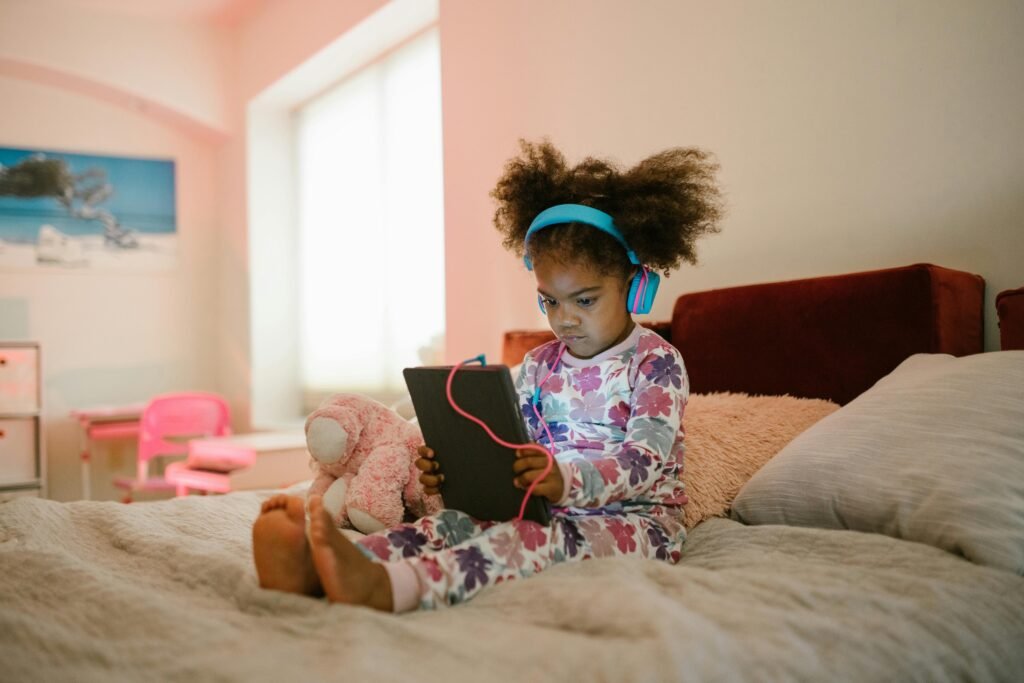
Many math concepts are hard to imagine in your head. Things like fractions, algebra, or geometry become clearer when you can see them in motion. YouTube gives that visual help, turning numbers into real-world examples.
Here’s how to make this work:
Use YouTube to reinforce topics your child is already learning in class. If they did multiplication in school today, watch a quick video that teaches it in a different way. It doesn’t have to be long—even a 5-minute video can help cement the idea.
Don’t use YouTube to teach everything from scratch. It works best as a booster to classroom learning. Think of it like practice after a sports game. You’re sharpening skills that were already introduced.
Encourage your child to solve a few math problems after watching the video. Applying what they just saw will help them retain the concept better. And if they get stuck, go back to the video together and rewatch the tricky part.
Math success often comes down to confidence. YouTube can help build that confidence, one short video at a time.
Watch time on educational YouTube channels spikes by 30% during exam season
During exam time, students are hitting YouTube hard. In fact, watch time on educational channels jumps by 30% when tests are coming up. That’s not a small rise—it’s a clear sign that kids are turning to video when they really need help.
This tells us two things. First, students see YouTube as a go-to study tool. Second, they trust it enough to use it during the most stressful time of the school year.
But here’s the catch—cramming doesn’t always work. Watching 10 videos the night before a test isn’t the same as slow, steady learning over time.
So how can you help your child use this 30% spike smartly, not just anxiously?
Start early. Even before exams are announced, build a habit of using YouTube for weekly review. That way, when the tests come around, your child already feels prepared.
You can also create a “study playlist” in advance. Include videos on key topics that your child can watch again during revision week. Having a ready-made list reduces stress and saves time.
During exam season, keep study sessions short but focused. One or two videos per subject, followed by quick review questions, works better than marathon video binges.
Support your child emotionally, too. Let them know that it’s okay to feel nervous. Help them breathe, take breaks, and stay hydrated. YouTube is a great tool, but so is a calm, focused mind.
By using YouTube wisely during exam season, your child can turn stress into success.
54% of students feel more motivated to study when learning from YouTube videos
Motivation is half the battle when it comes to learning. And YouTube seems to have cracked the code. More than half of students—54%—say they feel more motivated to study when using videos.
Why is that?
Because videos feel less like work and more like exploration. Kids get to see things, not just read about them. They can choose the topic, pace, and teacher. That sense of control makes learning feel empowering.
Also, many YouTube educators use humor, storytelling, and real-life examples. That makes the content feel alive. When kids enjoy the way something is taught, they’re far more likely to want to learn more.
As a parent, here’s what you can do:
Turn studying into a positive experience. Instead of saying, “Go study,” try saying, “Let’s find a cool video that explains this.” That small change in words can shift your child’s mindset from dread to curiosity.
You can even set learning challenges. For example, “Can you find the best video that explains gravity in under 5 minutes?” or “Teach me something new you learned from YouTube today.” This turns learning into a fun mission instead of a chore.
Celebrate small wins. If your child understands something better after watching a video, tell them you’re proud. That praise builds motivation for next time.
Remember, the goal isn’t just to make your child study—it’s to help them want to study. And YouTube can be a powerful part of that journey.
Test scores increased by 10% when students were allowed to review YouTube videos before exams
Here’s a simple but powerful stat—when students review YouTube videos before their exams, their scores go up by 10%. That’s a big difference, especially when every point counts.
Why does this work?
Because reviewing with video activates both visual and audio memory. It refreshes the brain in a fast, engaging way. And it helps students remember how to explain things in their own words—not just memorize them.
Before an exam, textbooks and notes can feel overwhelming. YouTube simplifies that. It lets kids go over the topic in a way that feels clear and doable. No flipping through pages or guessing what’s important.
So, how can you set up a smart review routine at home?
Start by picking a few key topics your child needs to know for the test. Then search for one high-quality video for each topic. Make a simple playlist they can watch the day before or even the morning of the test.
Encourage them to pause and repeat tricky parts. If they’re not sure about something, replay that section until it makes sense. You can also quiz them afterward using questions from the video or their notes.
Keep the review time short. One hour of focused video review is better than three hours of tired cramming. And don’t forget to add breaks, snacks, and sleep.
With just a little prep and the right videos, that 10% boost is well within reach.
Students who binge-watch educational videos without breaks score 13% lower due to cognitive overload
This one is a bit of a wake-up call. While YouTube is amazing for learning, too much of it at once can backfire. Research shows that students who binge-watch educational content without taking breaks score 13% lower. That’s a big drop—and the reason is something called cognitive overload.
Here’s what that means in simple words: the brain has a limit. If you try to stuff in too much information all at once, the brain can’t hold it. It gets tired, confused, and overwhelmed. It’s like trying to pour a whole bucket of water into a small glass—it spills everywhere.
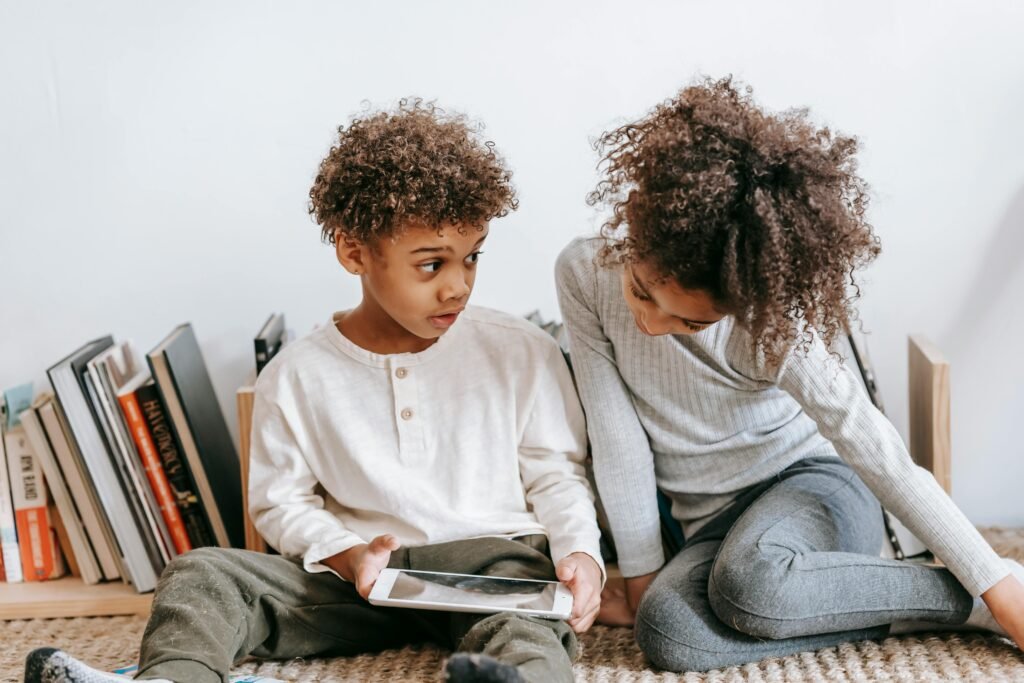
So even if the videos are helpful, watching too many in one sitting actually makes it harder to remember anything.
As a parent, this is where you can really help.
Set study sessions with short breaks in between. For example, let your child watch two short videos (maybe 5–6 minutes each), then take a 5-minute break. Get up, stretch, walk around, have a sip of water. Then come back refreshed.
You can also use a simple timer or study tool like the Pomodoro method (25 minutes on, 5 minutes off) to keep sessions balanced. These little pauses help the brain “soak in” what it just learned.
Watch your child’s mood too. If they start looking tired, frustrated, or zoned out, that’s a sign to stop and take a breather. Learning should feel challenging, not draining.
The goal is steady progress—not a marathon. Small steps, spaced out over time, build deeper understanding than a five-hour cramming session.
85% of students say they pause and replay YouTube videos to make sure they understand topics
Now this is a powerful habit—85% of students say they pause and replay parts of a video when they don’t understand something. That’s one of the big reasons YouTube works so well for learning. Kids can control the pace.
In a regular classroom, if a student misses something, the lesson keeps going. They may be too shy to ask the teacher to explain again. But on YouTube, they’re in charge. If something is confusing, they just rewind. If a part is super clear, they can skip ahead. That freedom helps learning feel more personal and less stressful.
And here’s the best part—this simple action of pausing and replaying boosts understanding. It gives the brain time to process the new information. It’s like saying, “Let me hear that again, so I really get it this time.”
Encourage your child to use this habit every time they watch an educational video. Remind them that it’s okay to rewind as many times as they need. It’s not a sign of weakness—it’s a sign of smart studying.
You can even teach them to pause and take notes on what they just heard. Writing things down helps lock the learning in. Then, when they review later, those notes serve as a quick reminder.
Some videos also have subtitles. Turning those on can help with focus and clarity, especially if the speaker talks fast.
Pausing and replaying may sound like a small thing—but it’s one of the most powerful tools a student can use.
Students who combine note-taking with watching YouTube score 18% higher
This stat is golden—students who take notes while watching videos score 18% higher. That’s nearly a full two-grade improvement, just from doing one extra thing while watching: writing it down.
Why is note-taking so effective?
Because it keeps the brain active. When kids write something in their own words, they’re not just hearing it—they’re processing it. That double action makes the memory stronger. It’s like carving the knowledge deeper into the brain.
Note-taking also creates a personal study guide. When it’s time for tests or homework, your child doesn’t have to search for the video again. They already have the key points written down.
So how do you help your child build this habit?
Give them a small notebook just for YouTube learning. Keep it close during video time. Before watching, remind them to write down the title and topic. While watching, they should jot down keywords, important steps, or questions they have.
The goal isn’t to copy everything—just the main ideas in a way they understand.
If your child is younger, you can do this together. Pause the video after every minute or two and ask, “What was the most important part?” Then write it down together.
Over time, they’ll learn how to take notes on their own. And that skill won’t just help with YouTube—it’ll help in school, in college, and even in their future job.
Simple tool. Big results.
Watching videos with animations and visuals improves test scores by 15%
When it comes to learning, how something is shown matters just as much as what is said. That’s why videos with animations, drawings, and colorful visuals help students understand better—and score about 15% higher on tests.
Visuals make ideas “stick.” If your child sees a cartoon diagram of the water cycle or a moving animation of how the planets orbit the sun, that mental picture stays in their brain. Later, when they need to explain it, they just remember what they saw.
Words alone are hard to remember. But when words are combined with pictures, stories, and color—it’s like giving the brain a shortcut to remember.
When choosing videos, pick ones with strong visuals. Look for animations, not just someone talking into a camera. Channels that use drawing boards, diagrams, or characters to explain concepts are usually better for younger learners.
Watch how your child reacts to different styles. Some kids learn better with colorful cartoons. Others prefer clear, clean visuals with step-by-step drawings. The key is to find what clicks with your child.
You can also encourage your child to draw what they see in the video. For example, if the video shows how blood flows through the heart, pause and ask them to sketch it out. It doesn’t have to be perfect—just enough to make the idea real.
Videos that show ideas visually bring learning to life. And when learning feels alive, test scores naturally go up.
64% of college students use YouTube as their main revision tool
This stat might surprise some people—64% of college students say they use YouTube as their main study tool when reviewing for exams. Not textbooks. Not notes. YouTube.
That shows just how much video learning has taken over. And it’s not just for younger kids—older students are relying on it even more.
Why?
Because college content can be really hard. Long chapters, tricky topics, and fast-paced lectures leave many students confused. YouTube helps fill in the gaps. It offers a second chance to understand things they missed in class.
So what does this mean for your child, especially if they’re in high school or heading to college soon?
Start helping them build this habit now. Show them how to search for review videos, save playlists, and organize topics by subject. Get them comfortable with finding good educational channels they trust.
You can also teach them how to use video alongside their notes. For example, watch a video, then match it to their textbook or class slides. This connects what they’re seeing with what they’ve already learned.
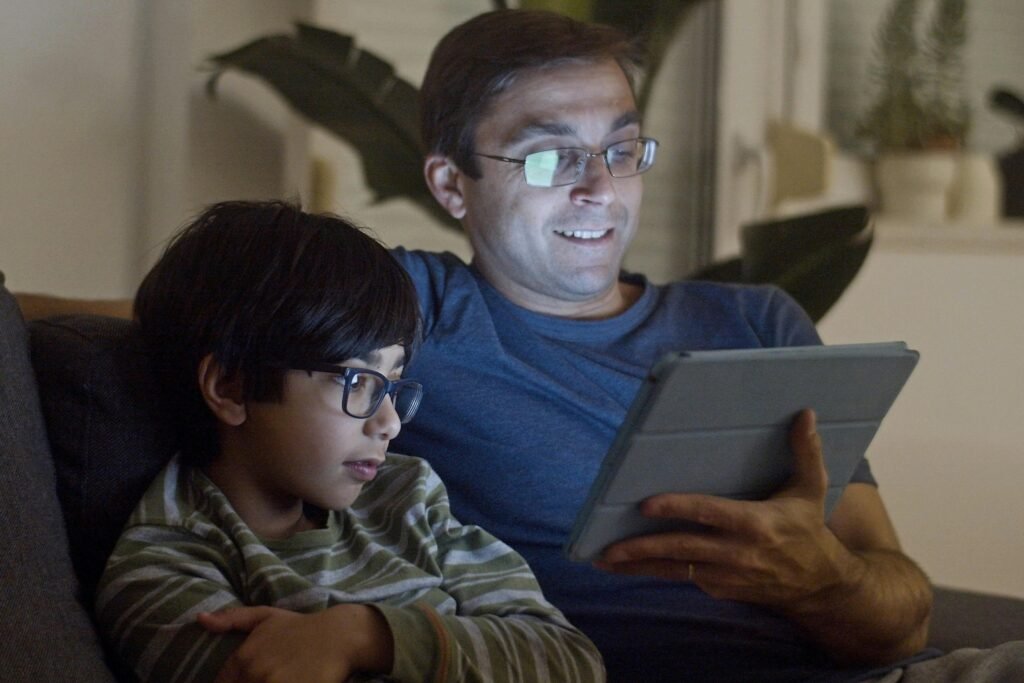
For final exams, encourage your child to do “video review sessions” where they watch key topics and then quiz themselves—or let you quiz them.
College students use YouTube because it works. If your child learns to use it well now, they’ll walk into higher education with a major advantage.
Students who watch educational content daily perform 11% better on standardized tests
Daily habits make a huge difference. Students who watch educational videos every day perform 11% better on standardized tests. That’s not just a small edge—it can be the difference between average and excellent.
The reason daily learning works so well is simple: it keeps knowledge fresh. Just like brushing teeth or eating healthy, a small effort every day adds up to big results over time. Daily video learning trains the brain to stay curious, stay sharp, and keep growing.
The key is to keep it consistent and manageable. You don’t need hours of screen time. Just 10 to 15 minutes a day can work wonders—especially if your child is focused and engaged.
As a parent, you can help make this a daily habit. Set a regular “learning time” in the schedule. It could be right after school or just before dinner. Keep it short and sweet. One video per subject per day is enough.
Make it fun, too. Let your child choose the topic sometimes—even if it’s outside their schoolwork. If they’re curious about space or coding or dinosaurs, great! Learning is learning. Curiosity builds confidence, and confidence improves test performance.
Over time, daily video learning will feel normal, not like extra work. And when test time comes, your child won’t need to cram—they’ve already built the knowledge step by step.
Consistency beats cramming. Every time.
Test anxiety is reduced by 26% when students prepare using familiar YouTube educators
Anxiety is one of the biggest obstacles to doing well on tests. But here’s something amazing—when students prepare with YouTube videos made by educators they know and trust, their test anxiety drops by 26%. That’s a huge emotional benefit.
Familiar voices and faces bring comfort. When a student watches videos from the same channel or teacher regularly, they build a connection. The content becomes easier to follow. The tone feels friendly. The style is predictable. All of this helps reduce stress when it’s time to study.
It’s like having a tutor who’s always there, who never judges, and who explains things the same way every time.
To use this at home, help your child find one or two go-to YouTube educators they really connect with. Watch a few videos from each channel. If your child likes the way the teacher explains things, subscribe. Over time, those videos will feel familiar and safe.
Before tests, have your child review topics with those trusted educators. The calm, consistent teaching style will help them feel prepared and relaxed. This lowers panic and builds confidence.
You can even create a “test-prep playlist” filled with videos from just one or two favorite channels. That way, your child isn’t scrambling to find videos—they’re following a familiar routine.
When your child feels calm and confident, their mind works better. Anxiety goes down. Test scores go up.
Average session duration on educational channels is 14 minutes—aligning with peak attention span
This stat is super interesting. The average time people spend watching educational content in one go is 14 minutes. That’s also the sweet spot for most people’s attention span—especially for kids and teens.
In other words, most learners naturally stop watching when their brain is full. That means 14 minutes is the “magic window” for focused learning. Go too far beyond that, and attention starts to drop. But hit the sweet spot, and the brain soaks up new ideas fast.
So how do you use this at home?
Plan short learning sessions. Instead of one long 45-minute video, break it up. Watch one or two short videos, then take a break or switch subjects. Let your child stand up, stretch, or talk about what they learned.
Also, respect the 14-minute limit when your child seems distracted or tired. That’s their brain saying, “I need a break.” It’s not laziness—it’s science.
You can also use this time limit to build routines. For example, make it a habit to do “14-minute learning bursts” after school. Set a timer. Make it a game. When the timer goes off, take a break and celebrate what was learned.
Learning in small, focused sessions is not only more effective—it’s way more enjoyable for your child. And when learning feels good, they’ll want to do more of it.
72% of learners say they prefer YouTube videos over textbooks
This one is huge—72% of learners prefer watching YouTube videos over reading textbooks. That’s nearly three out of four students. The reason? Videos feel more engaging, less overwhelming, and more tailored to the way kids think today.
Textbooks can be dry. They use big words. They move too fast or too slow. And they often explain things in just one way.
YouTube, on the other hand, uses pictures, voices, animations, and sometimes even humor. It feels like someone is talking to you, not at you. That makes learning more personal and less intimidating.
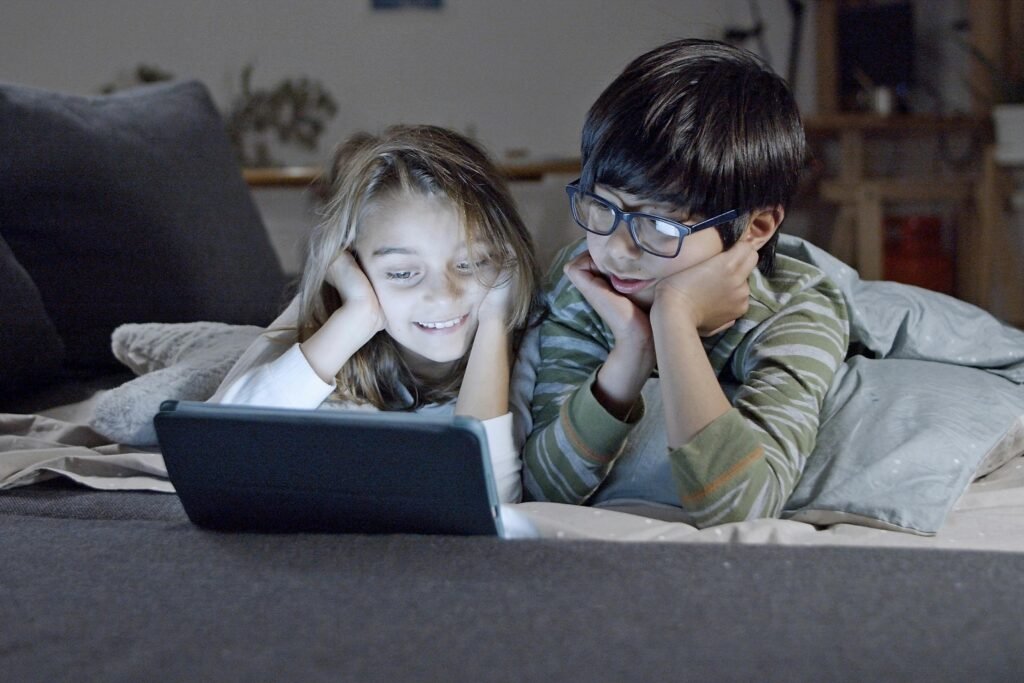
So what should you do as a parent?
Don’t fight it. Embrace it. If your child prefers videos, let them use them to supplement the textbook. For every chapter they read, find a video that explains the same topic. Let them watch first, then read. Or read first, then watch. Either order works—the key is pairing the two.
Also, respect your child’s learning style. If videos help them understand better, that’s not “cheating.” It’s smart. It’s using the tools of today to build the knowledge of tomorrow.
You can still teach reading and note-taking skills alongside video learning. One doesn’t cancel out the other. In fact, they can work together beautifully.
Let your child follow their curiosity through video. You’ll be amazed at how much they learn when they actually want to learn.
Test scores improved by 9% when teachers assigned specific YouTube videos as homework
When teachers take the lead and assign YouTube videos as part of homework, students score better—about 9% better. That’s because the video content is chosen to match exactly what’s being taught in class. It’s targeted. It’s timely. And it reinforces what was just learned.
Students who get these types of assignments are more likely to review the material on their own time. And since the videos are carefully picked, they’re usually high quality and easy to follow.
As a parent, this is a great opportunity to support your child’s learning.
If your child’s teacher assigns videos, ask to see them. Watch together if you can. Pause and talk about what’s being explained. Ask your child if it matches what they heard in class. Help them make connections.
If the teacher doesn’t use videos yet, suggest it kindly. Teachers are often open to new ideas, especially if it helps students learn better. Share some educational channels or ask if you can supplement with videos at home.
Also, encourage your child to treat video homework like real homework. Set aside time. Watch actively. Take notes. It’s not just screen time—it’s study time.
When teachers and parents work together to guide video learning, kids get the best of both worlds. They learn more, understand deeper, and walk into class feeling ready.
Interactive videos (with quizzes or prompts) on YouTube lead to 16% higher learning retention
Passive watching is good, but active engagement is even better. That’s why students who use interactive YouTube videos—ones with built-in quizzes, pause-and-think prompts, or mini challenges—remember 16% more of what they learn.
When learners are asked questions during the video, they stop and think. That moment of reflection helps lock in the lesson. It also gives them a chance to check their understanding before moving on.
Interactive videos are like a conversation, not a lecture. They make the brain work harder, which is a good thing when it comes to learning.
How can you use this at home?
Start by searching for videos or channels that include built-in questions. Some creators will ask, “Pause the video and try this problem,” or “What do you think will happen next?” These little prompts keep your child engaged and thinking.
If the video doesn’t include questions, create your own. Watch together and hit pause at key moments. Ask things like, “What did that mean?” or “Can you explain that in your own words?” These questions don’t have to be perfect—they just need to get your child talking.
You can also use a whiteboard or notebook. Let your child solve problems as they go. Draw what they see. Write key facts or examples. This makes it hands-on and helps with memory.
And don’t forget: even a simple quiz at the end of the video helps. You can ask your child five quick questions. Or let them quiz you! That turns learning into a game.
The more your child interacts with the video, the more they’ll remember. And the more confident they’ll become.
40% of students report watching 3+ educational videos before a test
When tests are near, students go straight to video. In fact, 40% of students say they watch three or more educational videos to prepare. That’s a clear signal—they trust videos to help them review and succeed.
These aren’t just random clips either. Smart students choose videos that explain key topics, review common mistakes, or show worked-out problems. It’s like building a mini revision class, on demand.
Watching multiple videos helps in two ways. First, it shows the topic from different angles. One teacher might explain it with a story. Another might use a diagram. The brain gets multiple paths to understand the idea.
Second, watching a few short videos keeps things fresh. If your child gets bored or confused with one explanation, they can try another.
Here’s how to use this smartly:
Before a test, sit with your child and plan out 3 to 5 short review videos. Make sure they match the topics that will be on the test. Spread them out over two or three days—don’t cram them all at once.
After each video, do a short review. Ask, “What was the most helpful thing you learned?” or “Was anything still confusing?” These conversations help your child reflect, which deepens understanding.
You can also create a playlist together. That way, your child doesn’t waste time searching when it’s time to study. Everything they need is ready to go.
Watching a few solid videos before a test can boost confidence and clarity—and take away a lot of that last-minute stress.
Students exposed to educational video content 3 times a week showed a 14% increase in knowledge recall
Frequency matters. When students watch educational videos just three times a week, their memory improves. In fact, they recall 14% more of what they’ve learned. That’s a big win for a small effort.
Why does this work?
Because repeated exposure strengthens memory. Every time your child sees the same concept again, it moves deeper into their long-term memory. Think of it like a path in the woods—the more often you walk it, the clearer it becomes.
Also, spacing out the learning gives the brain time to rest and absorb. When your child learns something on Monday, sees it again on Wednesday, and reviews it Friday, it sticks better than watching everything in one go.

Here’s how to apply this:
Set a simple goal—three short video learning sessions each week. These can be on different subjects or focused on one tricky area. Monday, Wednesday, and Friday is a great rhythm.
Keep each session to 10–15 minutes. Watch a video, talk about it, maybe do one or two follow-up problems or drawings.
Don’t worry if your child says, “We already learned this.” That’s the point. Review is how real learning happens. Each time they hear it, it gets clearer.
This habit is especially powerful for subjects that build on each other, like math or science. What your child remembers today becomes the foundation for what they’ll learn next week.
Repetition, done right, turns confusion into confidence.
Over 1,000 universities now have official YouTube channels for student learning
Universities around the world are embracing YouTube—not just for marketing, but for real education. Over 1,000 universities now have official YouTube channels filled with lectures, tutorials, and study resources.
These are not “watered-down” videos either. They include full-length lessons, expert explanations, and sometimes even full courses from top schools like Harvard, MIT, or Oxford. And they’re free.
That means your child doesn’t need to wait until college to learn from college-level teachers. They can start right now.
This opens a world of opportunity.
If your child is curious about advanced math, computer science, biology, or philosophy—they can jump in and explore. These videos show them what college-level learning looks like, sounds like, and feels like.
Even if they’re not ready to understand everything, just hearing how topics are taught can be inspiring. It shows them what’s possible.
As a parent, you can guide this exploration. Sit down and browse a few university channels together. Pick a topic your child is already interested in—robots, the brain, space travel—and look for beginner-friendly videos.
Watch one lecture a week as a “stretch” activity. You don’t need to understand every word. The goal is to build curiosity, not pressure.
These channels also help teens start thinking about future careers. What does a real engineer study? What does a biology major actually learn?
University YouTube channels are like windows into the future. Let your child peek in and dream big.
Students with limited access to video resources scored 17% lower on average
This is one of the most serious stats on the list. Students who don’t have regular access to educational videos score 17% lower on average. That’s nearly two full grade levels behind their peers.
This gap shows how powerful video learning is—but also how unfair it can be when it’s out of reach.
Access means more than just having a screen. It means having a reliable internet connection, knowing which videos to watch, and having the support to use them well.
If you’re a parent and you do have access to these tools, use them fully. They are one of the greatest advantages your child can have.
If access is limited—maybe due to data limits, shared devices, or poor Wi-Fi—there are still ways to help.
First, download videos ahead of time when Wi-Fi is available. YouTube Premium allows offline viewing. Some schools and libraries also provide video learning content or digital access.
Second, prioritize topics. If time is limited, choose videos that match what your child is currently learning in school. Stick to high-impact subjects like math and reading.
Third, advocate for support. Ask your child’s teacher or school if they offer tech help, data vouchers, or device loans. Many do, especially when they know there’s a real need.
No child should be left behind because they can’t watch a five-minute video. Every family deserves access to the tools that help kids learn and thrive.
Watching videos with subtitles improves comprehension and test performance by 8%
Subtitles aren’t just for people with hearing loss or different languages—they’re a learning superpower. When students watch videos with subtitles, their comprehension improves. And even better? Their test scores go up by 8%.
That might sound surprising, but it makes sense. Subtitles engage the eyes and ears at the same time. The brain processes the words visually and auditorily, which creates stronger understanding and recall.
Subtitles also help kids slow down and focus. If the speaker talks fast, the written words help catch key points. If the vocabulary is tricky, seeing the word on screen helps them recognize and remember it.
So how can you make use of this?
Turn on subtitles every time your child watches an educational video. Most YouTube videos have automatic captions, and many creators upload their own accurate subtitles.
You can also use subtitles to build reading skills. Ask your child to read along silently—or even out loud—while watching. This helps with fluency, pronunciation, and vocabulary.
If your child is studying in a second language, subtitles are even more valuable. They connect spoken and written language, making it easier to follow complex explanations.
Some platforms and video tools even let you slow down the playback speed while keeping subtitles on. This gives your child more time to process everything.
Subtitles are a simple switch with a powerful impact. Use them every time—and give your child that extra edge.
YouTube helps kids learn beyond academics—improving problem-solving, patience, and smart thinking
This final insight isn’t just about test scores—it’s about life skills. YouTube, when used right, helps kids grow in areas that go far beyond the classroom. Skills like problem-solving, patience, focus, creativity, and smart decision-making.
Think about a child watching a video about building a robot or solving a Rubik’s Cube. They pause, rewind, try it themselves. They fail, adjust, try again. That’s not just learning—that’s resilience.
Or imagine a child watching a coding tutorial. They follow along, step by step, checking for errors and thinking logically. That’s not just about computers—it’s about training the mind to think in smart, clear steps.
YouTube also introduces kids to different cultures, languages, and ideas. They learn how people live across the world, how history shapes the present, and how science explains the everyday. That kind of broad learning builds empathy and curiosity.
As a parent, look beyond grades. Celebrate when your child says, “I fixed it!” or “I finally understood this!” after watching a video. Those moments build self-worth and long-term confidence.
Encourage your child to follow their interests—even if they’re not part of school. Whether it’s animation, astronomy, architecture, or animals—learning what they love teaches them how to learn anything.
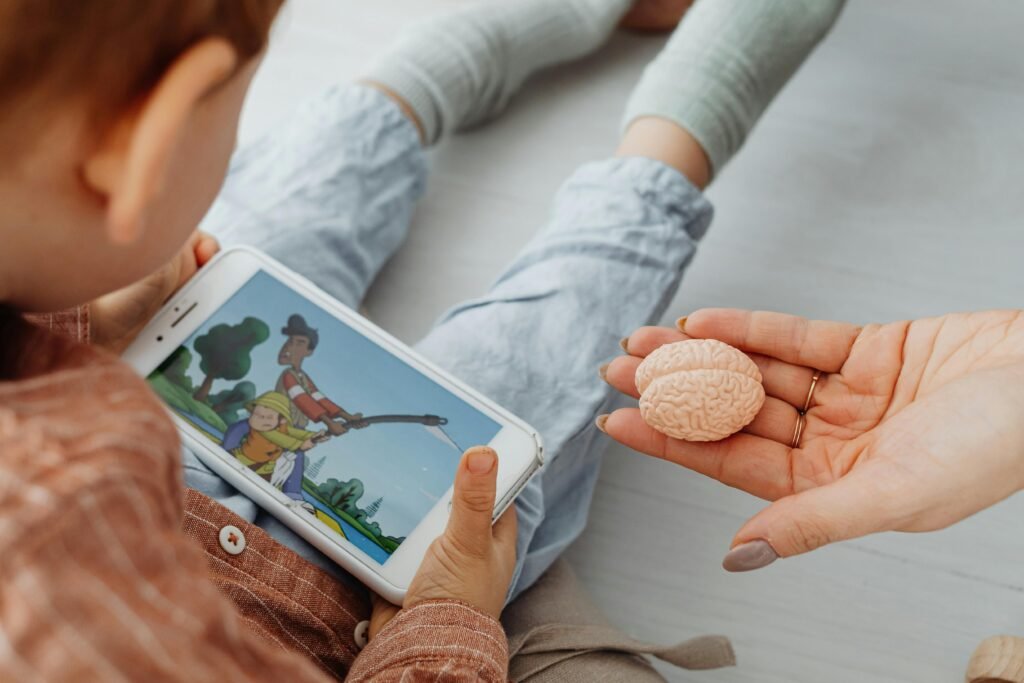
Test scores matter. But smart thinking, patience, and creativity? Those are the skills that last a lifetime.
Conclusion:
Let’s bring it all together.
YouTube isn’t just a place for funny videos or music. It’s a powerful, flexible, and inspiring tool that’s helping millions of kids actually learn better. It boosts test scores. It builds confidence. It fills learning gaps. And it’s available to anyone with an internet connection.
